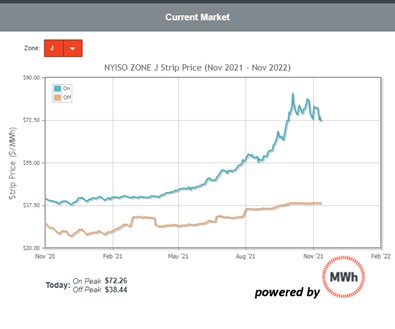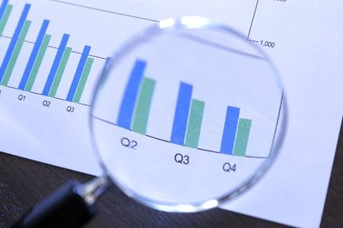By Deirdre Lord, The Megawatt Hour
Let’s just start by saying that energy markets have gotten more interesting over the past 4 to 6 months. After approximately 7 years of relatively low prices and low volatility, energy prices have spiked and markets have grown increasingly volatile. How volatile, you ask? According to the NY Independent System Operator, as of late September, natural gas prices in New York were up over 241% from the prior year. Year-to-date index power prices were up 84% compared to the prior year.
These are significant increases. Keep in mind that the starting points for these increases was extremely low. For example, the year-to-date index power price in NY State was $24.69/MWh as of September 2020. Demand destruction from the economic shutdown during the pandemic drove demand and, consequently, prices, down. Natural gas prices were so low that it wasn’t even worthwhile for some gas companies to produce. So, what do you need to know and how should you respond?

Volatility and higher prices have returned to energy markets (Source: MWh software)
First, make sure you have good information.
In order to communicate properly, you need to get information that is useful and actionable. In this market environment, historical information is useless. We’re just emerging from a period of significant usage changes (mostly declines due to pandemic shutdowns). We’ve also landed in an entirely unfamiliar market environment in which gas and power prices are higher than they’ve been in many years. Get as much intelligence and insight as you can about both your projected costs and your usage. Don’t rely on last year’s numbers.
Second, communicate.
No one really likes surprises. Since energy markets have been low and uninteresting for so long, finance and accounting have grown accustomed to getting good news from energy managers. The result is that energy managers and purchasers have not felt compelled to communicate with finance about what to expect from energy markets. The news was always good, energy markets were consistently in decline, budgets were low. Financial decision makers came to expect and anticipate lower costs year-over-year. All market signals indicate a return to higher energy costs and volatility. So, make sure that you are communicating regularly with finance and accounting. Help them set realistic expectations for energy budgets. It will only help you in the end.

Detailed cost data can provide valuable insights.
Third, process, process, process.
Energy buyers who plan ahead benefit the most. Think of it this way. You, the business energy consumer, will always be buying power and gas for as long as you are in business. That means that you should always be planning–not a few weeks or months in advance, but quarters and even years in advance. Understand the current and future market prices and how they move. Volatility can work for you if you have access to good information. If you need information, ask your supplier, your consultant, a trusted advisor or ask us for forecasts and information. No matter where you get information, make sure it is current and updated at least quarterly. Make this forecasting exercise part of your work process.
Bottom line for energy buyers and financial decision makers. Don’t panic. Use data and analytics to navigate complexity. Communicate well and frequently. Use volatility to your advantage.
Deirdre Lord is a Partner with The Megawatt Hour, which assists finance professionals, energy and facilities managers, and consultants obtain better energy outcomes. Deirdre can be reached at 917-750-3771 or at dlord@themwh.com